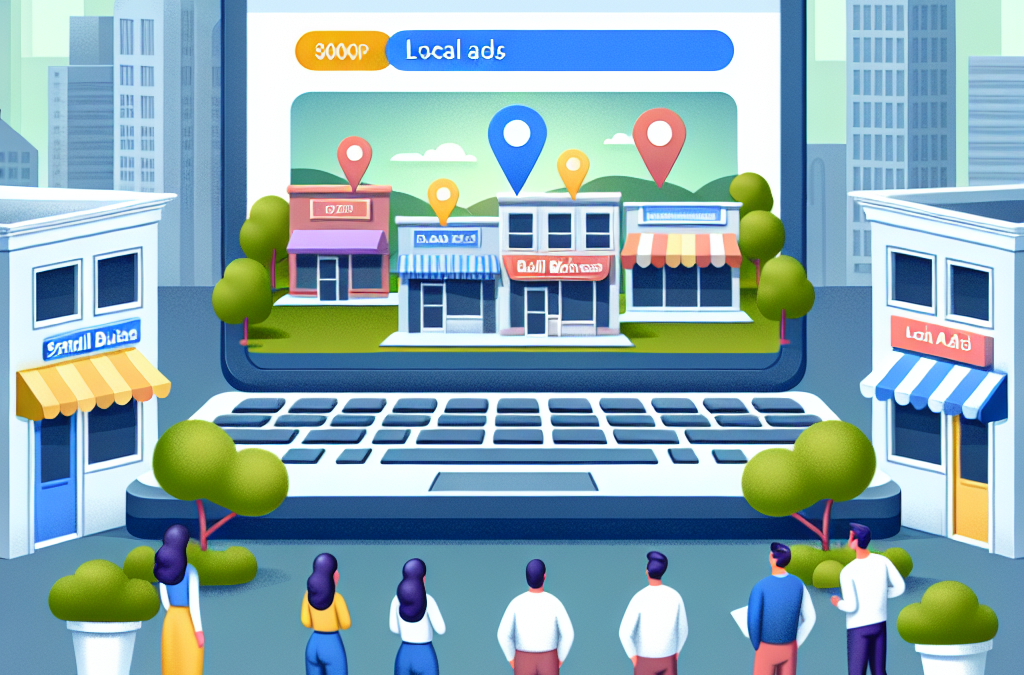Understanding Your Audience
Identifying Your Target Demographics
When you’re diving into local marketing with Google Ads, the first step is understanding who your audience is. For me, this always starts by identifying the demographics of my local customer base. Think about aspects like age, gender, and income level. By defining this, I’m able to tailor my ads to fit their interests and needs.
Next, I often utilize tools like Google Analytics and various social media insights to gather data on my audience. It gives me a clearer picture of who is engaging with my content online. The more data I have, the better I can shape my marketing message.
Lastly, community engagement can work wonders. I love connecting with locals, either through events or social media. Conversations with your customers can reveal valuable insights that data alone can’t provide. Listen actively; it pays off big time!
Analyzing Local Market Trends
Once I’ve got my audience down, it’s time to dig into local market trends. It’s crucial to understand what your local area is interested in. I spend time researching what’s hot or trending right now, especially in smaller local businesses. This often involves Googling popular keywords and topics related to my business.
You might also consider seasonal trends. For example, if you’re running a local ice cream shop, what keywords spike during the summertime? Knowing the ins and outs of seasonal demand helps me optimize my campaigns throughout the year.
I also like to keep an eye on my competitors. They often showcase what works and what doesn’t. Observing their strategies and customer interactions can spark new ideas for my own local campaigns.
Crafting Your Unique Selling Proposition (USP)
Your unique selling proposition is what sets you apart from the competition, and I can’t stress how important it is. Having a clear USP allows me to communicate to potential customers exactly why they should choose me. To craft mine, I think about what I do differently than others in my local area.
Moreover, I like to incorporate customer testimonials. They paint a picture of satisfaction and trust. When future customers see proofs that others love my business, it tends to sway their decision in my favor.
Lastly, creativity can go a long way! I try to express my USP in an engaging way through my ads. Whether it’s catchy slogans or unique visual elements, I want to make sure my ads aren’t just seen but remembered.
Setting Up Your Google Ads Campaign
Account Creation and Structure
Setting up a Google Ads account can feel overwhelming at first, but I promise it’s quite straightforward. I remember when I first created my account. I took it one step at a time, setting up my account, linking it to my website, and ensuring all my info was accurate.
I pay special attention to how I structure my campaigns. Organizing them based on services or products helps with better management. Each campaign should have different ad groups that target specific goals or products!
Once the account’s set up, I make sure to link my Google My Business profile. This way, when folks in my local area search for related terms, my business appears more prominently in the results. It’s like having a little beacon guiding customers to my door!
Keyword Research and Selection
Keyword research is essential when running Google Ads, especially for local marketing. I always start by brainstorming a list of relevant terms that relate to my business. What would locals search for when looking for services like mine?
After that, I dive into tools like Google’s Keyword Planner. It gives me great insights into search volumes and competition levels. This helps me gauge which keywords are worth targeting to maximize visibility without breaking the bank.
Also, I try to incorporate long-tail keywords. They’re often less competitive and more specific. For example, instead of just “pizza,” I’d target “vegan pizza near me,” which can attract a more specific clientele. The more tailored my keywords, the better my chances of connecting with potential customers!
Ad Creation and Optimization
Creating compelling ads is like storytelling. I’ve learned that the headline is crucial; it’s the first thing folks will see! A catchy and relevant title grabs attention and entices potential customers to read more. I usually highlight any promotions or special offers in my headlines to catch even more eyes.
For the ad copy, I try to convey the essence of my business within limited characters. It’s challenging but fun. I keep my tone friendly and relatable, steering clear of overly promotional language. Sharing what makes my service great in a conversational way helps foster that connection!
Finally, I keep an eye on performance. Continual optimization is key! I analyze metrics like click-through rates and conversions. Based on this data, I’ll tweak my ads, refresh headlines, or adjust my targeting to improve as I go. It’s all about testing and iterating!
Tracking and Measuring Success
Establishing Success Metrics
Tracking the performance of my Google Ads campaigns is super important. Establishing success metrics helps me understand what’s working and what needs tweaking. I typically focus on metrics like click-through rate (CTR), conversion rate, and cost-per-click (CPC).
Having a clear goal in mind helps define what success looks like for my campaigns. Is it getting more foot traffic into my store, generating calls, or increasing sales online? With specific goals, it becomes easier to measure success accurately.
Also, I recommend regularly reviewing these metrics, perhaps on a weekly basis. This way, I can make quick adjustments if something’s not hitting the mark.
Utilizing Google Analytics
If you’re not using Google Analytics to track your ads, you’re missing out! It provides a wealth of data that can enhance my understanding of customer behavior. I love setting up conversion tracking to see which ads lead to actual sales or inquiries.
Another cool feature is the ability to see where my traffic is coming from. This lets me identify which local areas are responding best to my ads. Armed with that info, I can invest more heavily in successful campaigns and pivot away from underperformers.
Additionally, Google Analytics allows for setting up custom reports, which I find incredibly helpful. It lets me focus on the metrics that matter most to my business, creating a concise picture of my ad strategy’s effectiveness.
Adjusting Strategies Based on Performance
Based on the data I collect, I’m always ready to adjust my strategies. If I notice certain keywords aren’t performing well, I may phase them out for more effective ones. Or, if a particular ad is getting great engagement, I’ll consider boosting its budget to capitalize on its success!
Constantly testing new ad variations can also yield better results. I enjoy experimenting with different calls to action or imagery to see which resonates audiences the most. It’s like a fun puzzle I get to solve every day!
Ultimately, adapting my strategies ensures I stay relevant and effective in a local market that’s always evolving. The more flexible I am, the better I can meet my customers’ needs.
FAQs
1. How can I determine my target audience for Google Ads?
Start by analyzing customer demographics and using tools like Google Analytics to gather insightful data about your audience’s interests, behaviors, and preferences.
2. What are some common mistakes when creating Google Ads?
One major mistake is not doing proper keyword research, leading to targeting the wrong audience. Additionally, writing vague ad copies that don’t highlight unique offerings can hurt engagement.
3. How often should I check the performance of my Google Ads?
I recommend reviewing your ad performance weekly. This will help you make timely adjustments and keep improving your campaigns for the best results.
4. Can Google Ads really help my local business?
Absolutely! Google Ads can enhance your visibility in local searches, drive more traffic to your store, and ultimately increase sales, especially if your campaigns are targeted well.
5. What’s the most important metric to track in Google Ads?
While several metrics matter, the conversion rate is crucial. It reflects how many of your clicks are converting into sales or inquiries, indicating the effectiveness of your ads.


